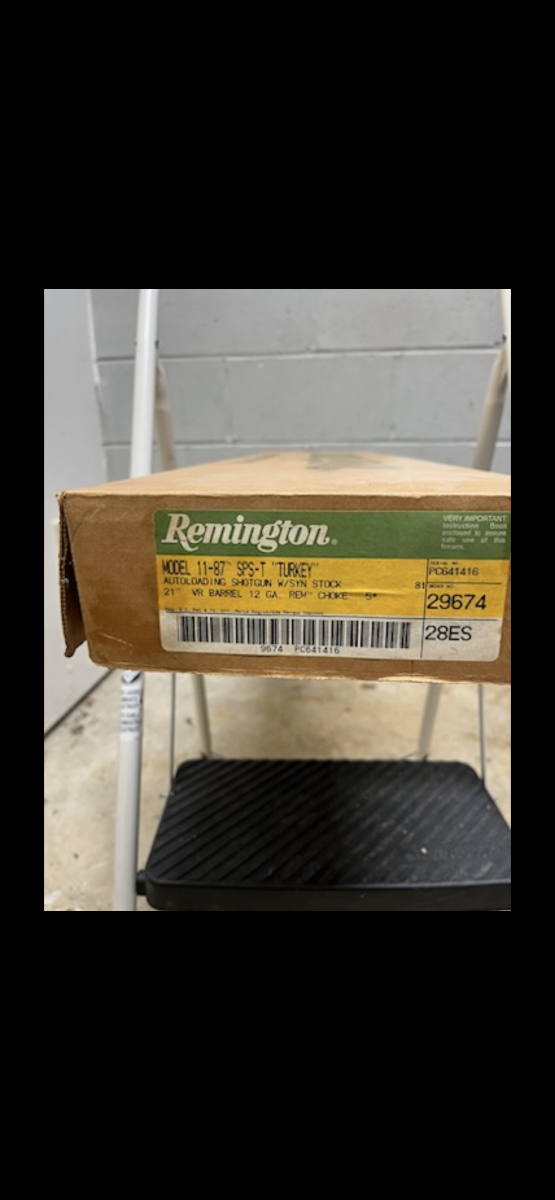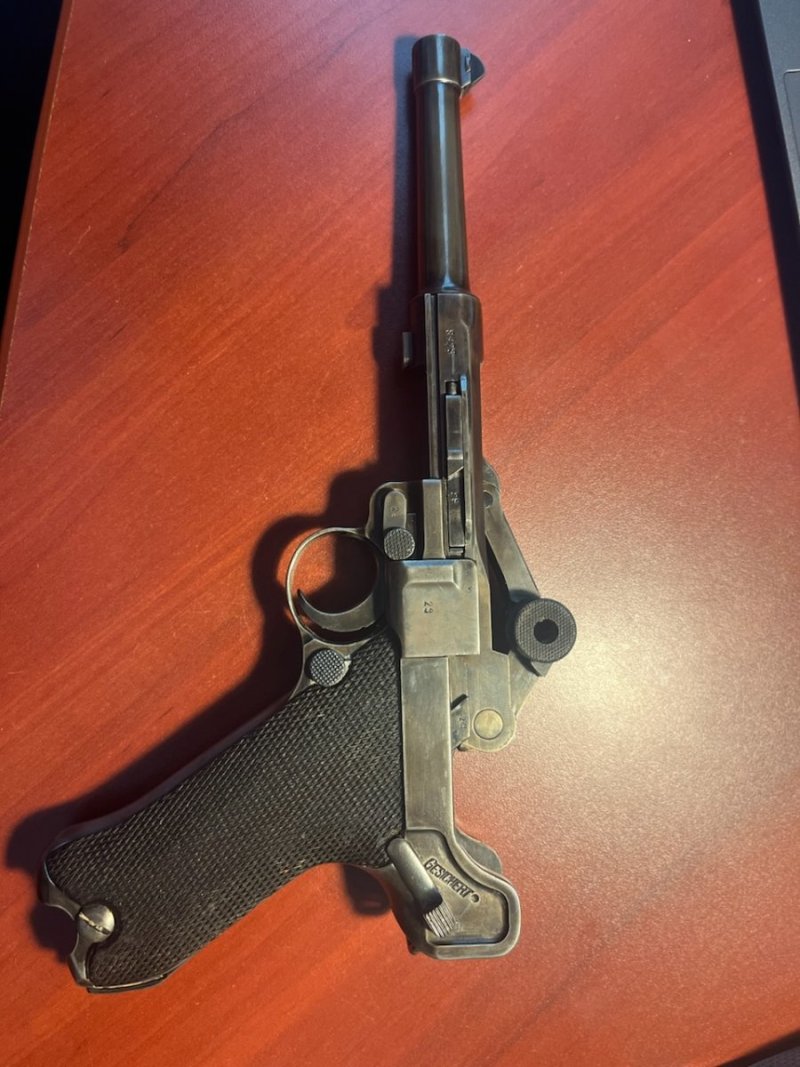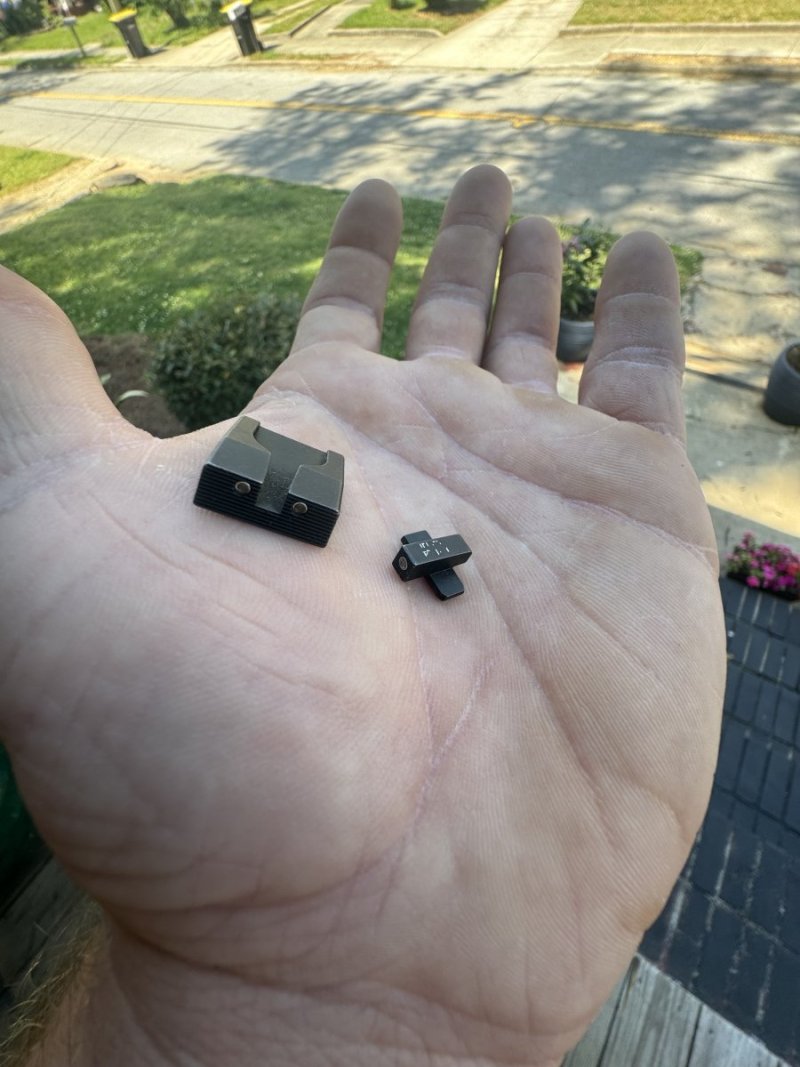I have a Browning 16ga A5 that was brought in today that I'm trying to determine value on. By serial number, it's a 1951 Belgian made, with serial number X584xxx. It is not marked "Sweet Sixteen", but my understanding is that it could be a postwar unmarked sweet sixteen. Condition wise, it's in really nice shape with some bluing loss on the the top and bottom tang. The round knob stock has seen field use, but isn't terrible. There is a chip out of the solid plastic butt plate. The forearm is in relatively the same condition as the stock. Not pristine, but not bad. The customer is a 93 year old man, and I'd really like for him to be able to get what the gun is worth. Any help would be much appreciated.





Navigation
Install the app
How to install the app on iOS
Follow along with the video below to see how to install our site as a web app on your home screen.
Note: This feature may not be available in some browsers.
More options
-
ODT Gun Show & Swap Meet - May 4, 2024! - Click here for info
You are using an out of date browser. It may not display this or other websites correctly.
You should upgrade or use an alternative browser.
You should upgrade or use an alternative browser.
Any Browning A5 experts? 16ga question
- Thread starter 10-8 Gunworks
- Start date
How does the bore and springs/internals look
You might try contacting Art Isaacson at https://artsgunshop.com/
He's the Browning shotgun guru. He can probably tell you value after a short conversation.
He's the Browning shotgun guru. He can probably tell you value after a short conversation.
Thanks for the vid, but I already knew the differences in the standard, and lightweight Browning models.
This one was brought in when I was locking up the shop, so I didn't have time to look at it yesterday. The carrier was also stuck in the down position with a live shell on top of it and the bolt forward and locked, which was the reason that it was brought in to begin with, so I couldn't do a quick check of the receiver to see if it had the milled out slots that the lightweights have. The owner purchased it new in 1953, and thought it was a lightweight model.
Fast forward to today, take a look at the barrel underneath the fore end, and strike one. No holes in the barrel ring. Get the action apart to remove the live round and, finally, I can see into the receiver. Strike 2. No milled slots in the receiver. No need to remove the stock, since it's safe to say that this one is a standard weight A5, not a lightweight.
I did get a response from a walking Encyclopedia of Browning Sweet Sixteen knowledge, who told me that the "X" numbered run of serial numbers have no external differentiation between the light and the standard. They were not marked "Sweet Sixteen" during the period of around '47-52 or 53. Additionally, not all of the lightweights had gold triggers during this time, which eventually Browning moved towards. Thusly, this one is not worth the 2k and up price that an unmarked sweet sixteen would command, and would be valued as a standard 16 from this era.
I called the owner and told him the news, and he said "Hell, I've got 5 of em. I thought this one was one of the lightweights. I better check the others!" This one is going to his grandson, and I'm happy for that. Family guns should stay with family. Thanks for the help and suggestions everyone.
This one was brought in when I was locking up the shop, so I didn't have time to look at it yesterday. The carrier was also stuck in the down position with a live shell on top of it and the bolt forward and locked, which was the reason that it was brought in to begin with, so I couldn't do a quick check of the receiver to see if it had the milled out slots that the lightweights have. The owner purchased it new in 1953, and thought it was a lightweight model.
Fast forward to today, take a look at the barrel underneath the fore end, and strike one. No holes in the barrel ring. Get the action apart to remove the live round and, finally, I can see into the receiver. Strike 2. No milled slots in the receiver. No need to remove the stock, since it's safe to say that this one is a standard weight A5, not a lightweight.
I did get a response from a walking Encyclopedia of Browning Sweet Sixteen knowledge, who told me that the "X" numbered run of serial numbers have no external differentiation between the light and the standard. They were not marked "Sweet Sixteen" during the period of around '47-52 or 53. Additionally, not all of the lightweights had gold triggers during this time, which eventually Browning moved towards. Thusly, this one is not worth the 2k and up price that an unmarked sweet sixteen would command, and would be valued as a standard 16 from this era.
I called the owner and told him the news, and he said "Hell, I've got 5 of em. I thought this one was one of the lightweights. I better check the others!" This one is going to his grandson, and I'm happy for that. Family guns should stay with family. Thanks for the help and suggestions everyone.
That's an awesome story. "Hell, I've got 5 of em." That line alone made me happy. You go grampa!Thanks for the vid, but I already knew the differences in the standard, and lightweight Browning models.
This one was brought in when I was locking up the shop, so I didn't have time to look at it yesterday. The carrier was also stuck in the down position with a live shell on top of it and the bolt forward and locked, which was the reason that it was brought in to begin with, so I couldn't do a quick check of the receiver to see if it had the milled out slots that the lightweights have. The owner purchased it new in 1953, and thought it was a lightweight model.
Fast forward to today, take a look at the barrel underneath the fore end, and strike one. No holes in the barrel ring. Get the action apart to remove the live round and, finally, I can see into the receiver. Strike 2. No milled slots in the receiver. No need to remove the stock, since it's safe to say that this one is a standard weight A5, not a lightweight.
I did get a response from a walking Encyclopedia of Browning Sweet Sixteen knowledge, who told me that the "X" numbered run of serial numbers have no external differentiation between the light and the standard. They were not marked "Sweet Sixteen" during the period of around '47-52 or 53. Additionally, not all of the lightweights had gold triggers during this time, which eventually Browning moved towards. Thusly, this one is not worth the 2k and up price that an unmarked sweet sixteen would command, and would be valued as a standard 16 from this era.
I called the owner and told him the news, and he said "Hell, I've got 5 of em. I thought this one was one of the lightweights. I better check the others!" This one is going to his grandson, and I'm happy for that. Family guns should stay with family. Thanks for the help and suggestions everyone.
I have tried to buy a few over the years but I am not the expert. I do know that aside from condition, attention goes to the barrel and choke - does it match the gun and is vent rib, is the butt plate or pad original, and is it in the salt gun date range. Price all over the place but the $1200+ guns check all the boxes. The best ones have the period correct browning velvet-lined case.
I have tried to buy a few over the years but I am not the expert. I do know that aside from condition, attention goes to the barrel and choke - does it match the gun and is vent rib, is the butt plate or pad original, and is it in the salt gun date range. Price all over the place but the $1200+ guns check all the boxes. The best ones have the period correct browning velvet-lined case.
Yes sir, this one was well before the salt wood problem. All numbers matched, and it was a fixed choke (one of the most common) non ribbed barrel. The butt plate was original, but had a chip out of one corner. I was not familiar with the "X" prefix serial numbers, but I'm learning.












